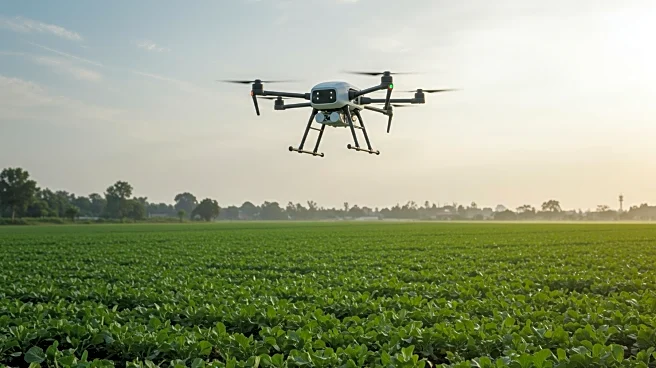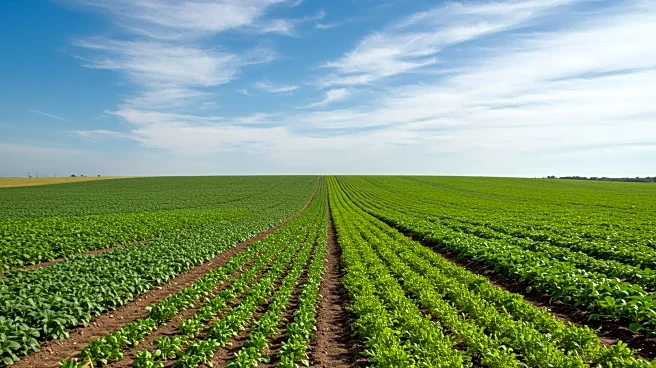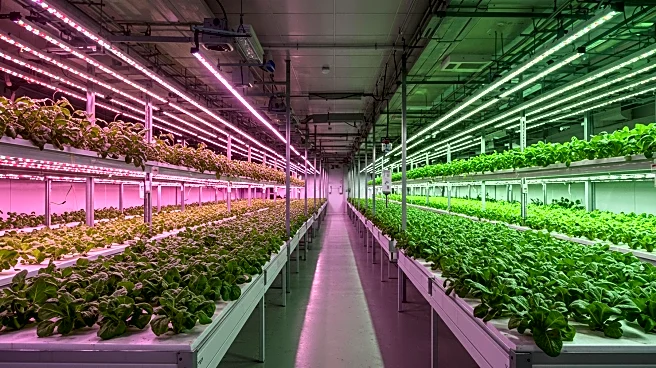What's Happening?
The Agriculture Antibacterial Market is projected to experience significant growth, with a compound annual growth rate (CAGR) of 8.6% from 2025 to 2033. The market, valued at $700 million in 2025, is expected to reach $1.35 billion by 2033. This growth is driven by increasing demand for clean, high-yield produce and rising awareness of plant pathogens. Major companies such as BASF, Syngenta, Bayer, Corteva, Nufarm, and FMC are profiled in the market study. The market is segmented by type, including copper compounds, streptomycin, tetracycline, biological agents, and nano-silver, and by application, covering fruits, vegetables, pulses, cereals, and ornamentals.
Why It's Important?
The expansion of the Agriculture Antibacterial Market is crucial for ensuring healthy crop growth and combating bacterial plant diseases like blight, wilt, or canker. The market's growth reflects a shift towards sustainable agriculture practices, with biological antibacterials offering significant growth opportunities. However, challenges such as misuse and environmental risks persist. The market's development is vital for protecting crop yields, enhancing pathogen resistance, and supporting organic farming initiatives.
What's Next?
The market is expected to continue its growth trajectory, with advancements in biological antibacterials and nano-formulations. Integrated pest and bacteria control methods, along with regulatory shifts and AI-based crop health monitoring, are anticipated to drive further innovation. Companies are likely to focus on expanding their product offerings and enhancing their research and development capabilities to address market challenges and capitalize on growth opportunities.
Beyond the Headlines
The Agriculture Antibacterial Market's growth has broader implications for global food security and environmental sustainability. As demand for high-yield produce increases, the market's expansion could lead to more sustainable farming practices and reduced reliance on chemical pesticides. This shift may also influence regulatory policies and consumer preferences, promoting healthier and more environmentally friendly agricultural products.











